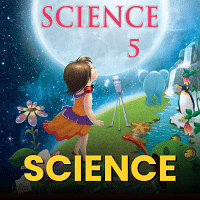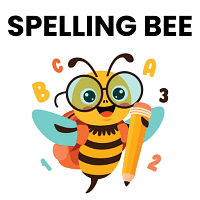Class 5 Exam > Class 5 Questions > What is animal kingdom and what is plant king...
Start Learning for Free
What is animal kingdom and what is plant kingdom?
Most Upvoted Answer
What is animal kingdom and what is plant kingdom?
Animal Kingdom and Plant Kingdom
Animal Kingdom:
The animal kingdom is a major group of living organisms that includes multicellular animals. These organisms are eukaryotic, meaning their cells have a nucleus and other membrane-bound organelles. Animals are heterotrophic, meaning they must consume other organisms for sustenance. They are also capable of movement at some point in their life cycle.
Key points about the Animal Kingdom:
- Animals are multicellular organisms with eukaryotic cells.
- They are heterotrophic, meaning they obtain nutrients by consuming other organisms.
- Animals can move at some point in their life cycle.
- Examples of animals include mammals, birds, reptiles, amphibians, and fish.
Plant Kingdom:
The plant kingdom includes all living organisms that are capable of photosynthesis. These organisms are also eukaryotic and multicellular. Plants are autotrophic, meaning they can produce their own food through photosynthesis. They have cell walls made of cellulose and are immobile.
Key points about the Plant Kingdom:
- Plants are multicellular organisms with eukaryotic cells.
- They are autotrophic, meaning they produce their own food through photosynthesis.
- Plants have cell walls made of cellulose.
- Examples of plants include trees, flowers, grasses, and ferns.
In conclusion, the animal kingdom and plant kingdom are two major groups of living organisms with distinct characteristics and functions. While animals are heterotrophic and capable of movement, plants are autotrophic and immobile. Both kingdoms play essential roles in the ecosystem and contribute to the balance of nature.
Animal Kingdom:
The animal kingdom is a major group of living organisms that includes multicellular animals. These organisms are eukaryotic, meaning their cells have a nucleus and other membrane-bound organelles. Animals are heterotrophic, meaning they must consume other organisms for sustenance. They are also capable of movement at some point in their life cycle.
Key points about the Animal Kingdom:
- Animals are multicellular organisms with eukaryotic cells.
- They are heterotrophic, meaning they obtain nutrients by consuming other organisms.
- Animals can move at some point in their life cycle.
- Examples of animals include mammals, birds, reptiles, amphibians, and fish.
Plant Kingdom:
The plant kingdom includes all living organisms that are capable of photosynthesis. These organisms are also eukaryotic and multicellular. Plants are autotrophic, meaning they can produce their own food through photosynthesis. They have cell walls made of cellulose and are immobile.
Key points about the Plant Kingdom:
- Plants are multicellular organisms with eukaryotic cells.
- They are autotrophic, meaning they produce their own food through photosynthesis.
- Plants have cell walls made of cellulose.
- Examples of plants include trees, flowers, grasses, and ferns.
In conclusion, the animal kingdom and plant kingdom are two major groups of living organisms with distinct characteristics and functions. While animals are heterotrophic and capable of movement, plants are autotrophic and immobile. Both kingdoms play essential roles in the ecosystem and contribute to the balance of nature.
Attention Class 5 Students!
To make sure you are not studying endlessly, EduRev has designed Class 5 study material, with Structured Courses, Videos, & Test Series. Plus get personalized analysis, doubt solving and improvement plans to achieve a great score in Class 5.

|
Explore Courses for Class 5 exam
|

|
What is animal kingdom and what is plant kingdom?
Question Description
What is animal kingdom and what is plant kingdom? for Class 5 2024 is part of Class 5 preparation. The Question and answers have been prepared according to the Class 5 exam syllabus. Information about What is animal kingdom and what is plant kingdom? covers all topics & solutions for Class 5 2024 Exam. Find important definitions, questions, meanings, examples, exercises and tests below for What is animal kingdom and what is plant kingdom?.
What is animal kingdom and what is plant kingdom? for Class 5 2024 is part of Class 5 preparation. The Question and answers have been prepared according to the Class 5 exam syllabus. Information about What is animal kingdom and what is plant kingdom? covers all topics & solutions for Class 5 2024 Exam. Find important definitions, questions, meanings, examples, exercises and tests below for What is animal kingdom and what is plant kingdom?.
Solutions for What is animal kingdom and what is plant kingdom? in English & in Hindi are available as part of our courses for Class 5.
Download more important topics, notes, lectures and mock test series for Class 5 Exam by signing up for free.
Here you can find the meaning of What is animal kingdom and what is plant kingdom? defined & explained in the simplest way possible. Besides giving the explanation of
What is animal kingdom and what is plant kingdom?, a detailed solution for What is animal kingdom and what is plant kingdom? has been provided alongside types of What is animal kingdom and what is plant kingdom? theory, EduRev gives you an
ample number of questions to practice What is animal kingdom and what is plant kingdom? tests, examples and also practice Class 5 tests.

|
Explore Courses for Class 5 exam
|

|
Signup for Free!
Signup to see your scores go up within 7 days! Learn & Practice with 1000+ FREE Notes, Videos & Tests.























